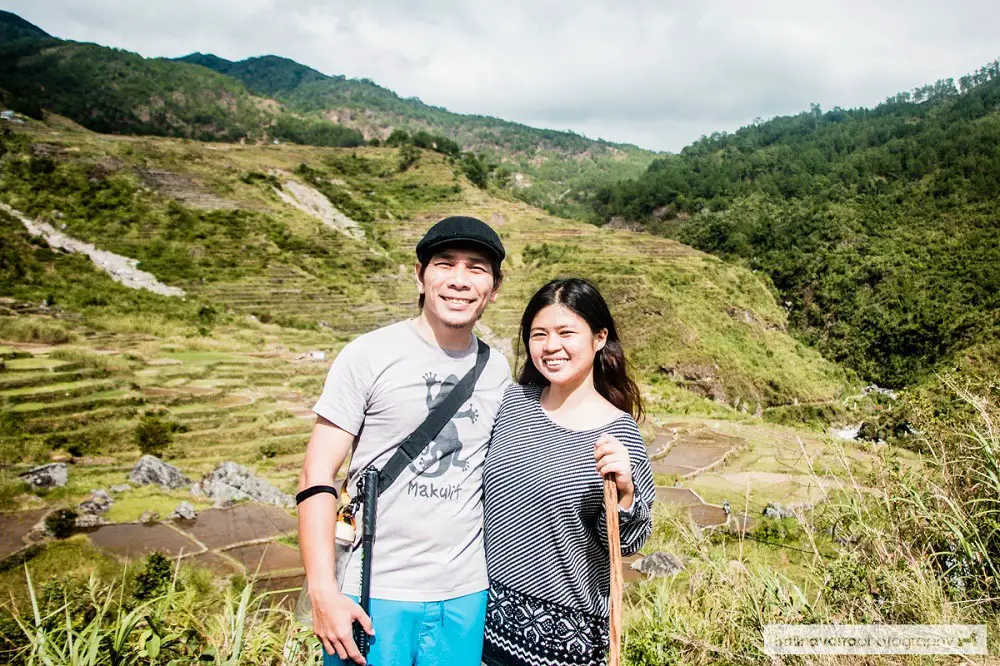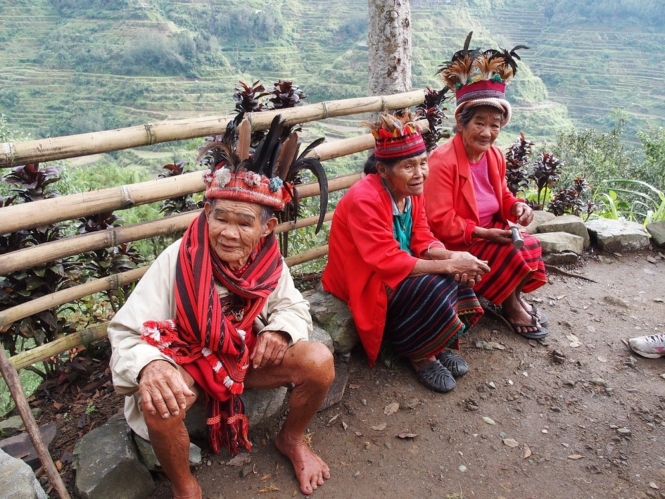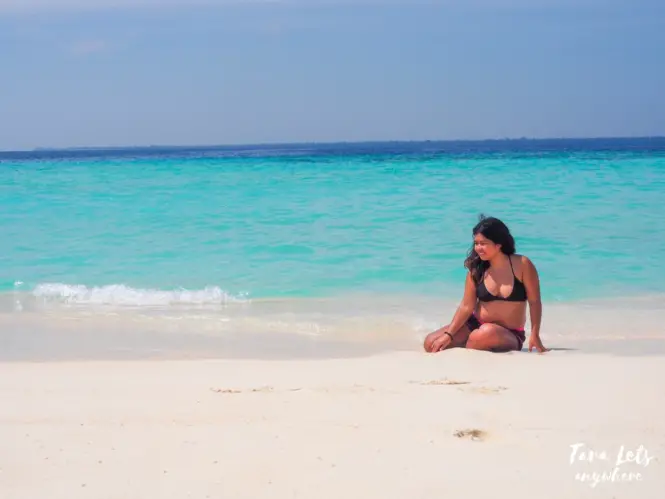
17 Things to Know Before Visiting the Philippines (Plus Local Tips)
Are you planning on taking a trip to the Philippines? Be fully prepared by reading this list of essential things you need to know before visiting the Philippines!
Contents
- 1. The local currency is peso
- 2. Best months to visit
- 3. English is widely spoken
- 4. Local sim cards
- 5. How to stay connected online
- 6. Expect traffic in major cities
- 7. How to get around
- 8. Shorts, skirts, and sleeveless tops are okay
- 9. Locals are welcoming and hospitable
- 10. Over 7000 islands to explore!
- 11. Best beaches in Asia
- 12. Snorkeling and diving sites
- 13. Hiking destinations
- 14. Filipinos love to eat!
- 15. Tipping culture
- 16. It’s safe to visit
- 17. It’s a third-world country
- What to read next:
1. The local currency is peso
You can exchange your money in the airport or money changers outside to Philippine peso. This is the only currency accepted in stores.
Rough equivalent is $1 = P50.
2. Best months to visit
An important thing you should know about the Philippines is that it has only 2 seasons: dry season (November to May) and rainy season (June to October).
The dry season is the best time to visit this country. In particular, December to February are cool months with few rainfall so these are the best months to book your ticket. Take note that December is holiday season, so expect peak rates. April to May is summer time so expect good weather in general, but it also coincides with school break so it’s peak season as well.
During rainy season, the country experiences typhoons. Typhoons are a big deal because the Philippines sits on a typhoon belt, which means it gets about 20 typhoons per year. During bad typhoons, boat transfers, island hopping activities, etc, may be cancelled. It is also the off-peak season so travelers may choose this time to enjoy places with less crowd and cheaper rates.
In the recent years, the climate is continuously changing so the seasons may come earlier or later than usual.
3. English is widely spoken
Basic English is spoken in the Philippines especially in major tourist areas such as Palawan, Cebu, Bohol, Boracay, and so on. This is because the official languages in the country are both Filipino and English. As such, the English language is taught in school.
In some destinations we’d been to, we’d encountered local communities who do not speak Filipino or English, but this is pretty uncommon. Unless you’re going to legit off-beaten tracks (I don’t mean places that are less crowded, but those with no tourism structure yet), I doubt you’d have this problem too.

4. Local sim cards
The best sim cards to use are Smart or Globe.
5. How to stay connected online
WIFI isn’t available in all public areas in the Philippines and even private connections are slow (usually 1-5MB). Free wifi is rarely available in public. Cafe and restaurants may offer free WIFI, but not always.
The best way to get connected to the internet is buying your own sim card. Globe offers 2GB WIFI for a week for only $2 (P100).
However, take note that, in certain areas in the country — particularly in rural locations or islands — mobile signal/data is either erratic or non-existent.
If you’re a freelancer or someone who always need to be online, this is something you need to consider. Research about the destination ahead of time to know about about WIFI or mobile data availability and choose accommodations that offer free WIFI.
6. Expect traffic in major cities
If you’re arriving in Manila, expect traffic on main roads and highways. If you’re here on a short layover, it’s best to stay inside the airport or explore to near destinations such as Mall of Asia. Further than that and you might be stuck in traffic for hours!
Also Read: Things to Do and Places to See in Manila
7. How to get around
Tricycles, jeepneys and buses are the common types of local transportation. Minimum fare per person is less than P10 ($0.50). Make sure to keep P20 and P50 bills for payment because a lot of drivers don’t keep change for huge bills.

Taxis are also widely available, but to be honest there’s a lot of dishonest taxi drivers who will set a fixed amount instead of using a meter or refuse to take you on routes that pass through high-traffic areas.
You may also want to download transportation apps: Angkas (for motorcycles rides) or Grab (car or taxi).
8. Shorts, skirts, and sleeveless tops are okay
You don’t have to worry about covering your body with shawls or long dresses because shorts, skirts, and sleeveless tops are okay. Even for residents this type of clothing is normal!
In fact, during summer season it’s best if you plan your wardrobe with light and loose clothes so you can be more comfortable with the hot & humid weather.
However, take note that the country as a whole is still fairly conservative so make sure to dress appropriately in public. Wearing bikinis in beaches and island hopping activities are okay, but once you’re off the beach, it’s best to cover yourself with a beach dress or shirt. Overt PDAs are also controversial. Holding hands and pecks are okay — French kissing in public is a no-no.
9. Locals are welcoming and hospitable
The Filipinos pride themselves for being warm and hospitable to visitors, especially foreigners. Don’t be surprised if strangers start chatting with you. If you need help of any kind, they are also usually happy to help.
10. Over 7000 islands to explore!
The Philippines is an archipelago composed of over 7000 islands. The most recent official count puts the number to 7164 islands. How does this affect you? Well, it means you have literally thousands of options to go to!

It also means you have to take local flights to get to travel to different provinces or ferry to neighboring ones.
Flights in the Philippines are expensive if bought in regular price. Depending on the destination, a local ticket may cost P4000-7000 one way. Make sure to watch out for promos from budget airlines to get tickets priced P1000-1500 one way.
Also Read: How to Book Cheap Flights in the Philippines
11. Best beaches in Asia
The Philippines is rich in natural resources and it has some of the most beautiful beaches you can find in Asia. These can be found in Boracay, Palawan, and Cebu. Even off-beat provinces such as Sorsogon have great beaches!

Personally, my favorite beach destination is Balabac. This remote area in the southern part of Palawan offers gorgeous virgin islands with white find sand and alluring blue water.
12. Snorkeling and diving sites
The Philippines also has a lot of great snorkeling and diving sites. If you’re looking to get PADI certified, there’s a lot of options for you on where to get one.
If you’re staying near Manila, you can take a 2-hour drive to Batangas where you can find the Verde Island Passage, known for its marine biodiversity. Here you can find lots of beach & dive resorts.

Other great spots for snorkeling & diving include Moalboal and Malapascua (Cebu), Panglao Island (Bohol), Camiguin Island, and Apo Island (Negros Oriental).
13. Hiking destinations
Do you prefer to trek and climb mountains instead of chilling in the beach? There’s a lot of hiking destinations in the Philippines too.
If you’re staying near Manila, you can take a short drive to trek Mount Pinatubo, which is an active volcano in Zambales, or commute overnight to Banaue to see the Batad rice terraces, which are handcrafted by indigenous people a long time ago.

If you’re strictly after mountain trails, one popular destination is Mount Pulag. There are other hundred options whether you’re staying in Manila or not.
14. Filipinos love to eat!
It’s a common joke that instead of saying “Kamusta?” (How are you?), Filipinos greet with “Kumain ka na?” (Have you eaten yet)? Filipinos have a huge appetite and usually eat 4-5x a day.

You may find that Filipino food isn’t up to par with local cuisines in other Southeast Asian countries such as Malaysia, but it only means you need to make extra effort in researching where to eat. There are a lot of great local restaurants in every location if you know where to look.
Also Read: Must-Try Food in the Philippines
15. Tipping culture
Tipping is not a common practice in the Philippines. Restaurants already include a service tax in bills, so tipping is optional. This also goes for services.
However, I always urge people to give tips to local guides who assist them during traveling. A lot of these people, even those working in major tourist attractions in Palawan, aren’t earning much and their income depends on the tourist season. As for myself, I usually give P200-500 depending on the tour I’ve taken.
16. It’s safe to visit
The Philippines unfortunately suffered a stigma due to attacks which happened in the south over the last few years. While these reports are true, these happened in concentrated areas.
Generally speaking, the Philippines and even most of Mindanao is safe to visit.
In fact, one of my favorite destinations in the country is Zamboanga City in Mindanao! I first went there during the annual Hermosa Festival and I had a great time.
17. It’s a third-world country
The Philippines is a beautiful country but it’s a third-world country, so adjust your expectations accordingly. There’s still a lot of things to improve in terms of transportation, structures, services, and so on. My advise is to take it as part of your adventure.
What to read next:
Planning a trip to the Philippines? Check out these guides!
- First-Timers Guide to the Philippines
- Best Places to Visit in the Philippines
- Things You Need to Know Before Visiting the Philippines
- Is the Philippines Safe to Visit?
- Off-the-Beaten-Track Destinations in the Philippines
- Suggested 2 Weeks Itinerary in the Philippines
- Suggested 3 Weeks Itinerary in the Philippines
- Philippines Packing List
Others:

Katherine Cortes is a long-time backpacker and a freelance writer/editor. She likes beaches, snorkeling trips, and relaxing staycations (preferably with bath tubs!).



